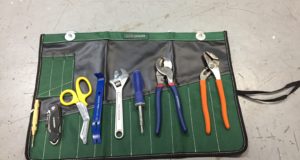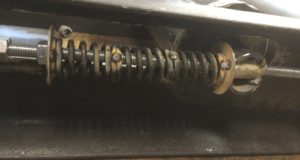 In Part 1 of this discussion on air chisels we touched on operating hazards, general operating techniques, and a homemade chisel prop. Several videos of training on the prop along with the entire post can be seen here. Again, air chisels seem to be a love them or hat them type of tool, but in many scenarios they can provide a quick means to rescue entrapped victims. In this post we added some more training tips, street-smart techniques, and pictures of possible uses. The list isn’t all inclusive, but at least a start for your training.
In Part 1 of this discussion on air chisels we touched on operating hazards, general operating techniques, and a homemade chisel prop. Several videos of training on the prop along with the entire post can be seen here. Again, air chisels seem to be a love them or hat them type of tool, but in many scenarios they can provide a quick means to rescue entrapped victims. In this post we added some more training tips, street-smart techniques, and pictures of possible uses. The list isn’t all inclusive, but at least a start for your training.
FIRST DUE TACKLE ON FACEBOOK, CLICK “LIKE”
Phil Burden and I have been trading emails on using chisels here lately and he brought up several great teaching points. Not only do we need to know how to set up the tool for operations, we also need to understand the tips, angles, and handling.
Tips
In Post 1, several types of chisel tips and working pressures where listed. For this post we added a little more description to the photos on where you may use them. Add other possibilities in the comments section below.
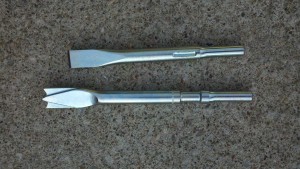
Top: Flat chisel tip. Note the knotches on the shank that lock the chisel from spinning (90-125 psi). Used to cut bolts heads, rivets, and other machinery related pins. Bottom: double bladed panel cutter. Note the smooth shank that allows the chisel tip to spin (90-125 psi). Used to cut sheet metal panels on vehicles, Q decking, metal shelled buildings.
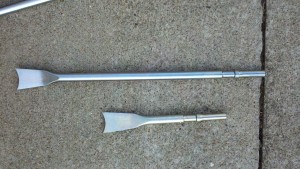
Quick cutter chisel tip: for cutting vehicle posts, hinges, around nadir pins, thinker structural steel on vehicles (125-175 psi).
It is important to practice using the different chisel tips to fully understand the capabilities.
Angles
Again, it takes a great deal of practice to get a feel for the proper angle to hold the chisel. For example, if you are using a double blades panel cutter and plunge into a sheet metal panel on a car, chances are good that you may get the tip stuck. The tips are not meant to be used as a prying tool and can fail when used in such a manner.
The picture to the left shows a firefighter using the chisel at a low angle in relation to the material being cut. This prevents plunging the tip head into the material and potentially becoming stuck.
Another example where angles come into play is when cutting metal such as frame rails, reinforcing tubes, and hinges.
The chisel operator must constantly change the angle of the chisel to stay flush with the material being cut.
In the picture to the left, you can see all the different angles that the chisel will have to move in to complete the cut of the frame above the strut tower for a dash lift. More on using the chisel to speed up the dash lift later in this post.
Handling
Think about how most chisels come out of the storage box…sideways, right? Just because the chisel looks like a gun, you don’t have to hold it like a police officer. You are allowed to hold the chisel sideways and upside down as well. Whatever position puts you into the best position to have a good angle for the chisel tip you picked to use for the job.
Check out Franklin Twp (OH) FD Chief Washburns technique in this picture. Chisel sideways with one hand on the trigger and the other hand turning the tip as needed.
A Few More Scenarios
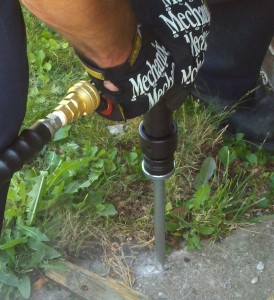
This small chisel is no jackhammer, but some kits come with a concrete bit that can get you started.
As mentioned above, the chisel can be used to speed up extrication in a dash lift. If part of the crew is popping the door, another crew member can be taking out the frame in front of the A post. You can barely see the spreader working over the Chiefs shoulder.
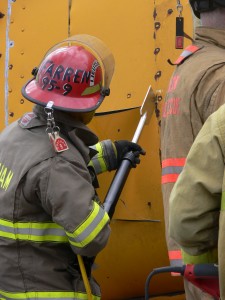
This chisel is normally used for structural collapse purposes, however, it did make quick work of the school bus roof.
Good chisel ops takes practice. Keep the heel of your chisel low, tip angled low, and one hand on the trigger and the other on the chisel tip. Seek out your local body shops for scrap car doors or junk yards for vehicles and go to work.
Pass it on!
 First Due Tackle Pass It On – Firefighter, Rescue & Extrication Training
First Due Tackle Pass It On – Firefighter, Rescue & Extrication Training





